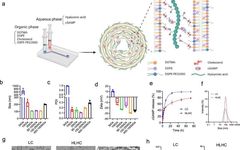Single-Dose Physically Cross-Linked Hyaluronic Acid and Lipid Hybrid Nanoparticles Activate Antitumor Immune Response
iNature Activating the STING pathway in the cytosol of tumor-infiltrating antigen-presenting cells (APCs) can trigger an effective antitumor immune response for cancer treatment. However, most STING agonists are hydrophilic small molecules that face rapid clearance and poor cytosolic delivery issues after systemic administration. Although various nanoparticles have been developed to facilitate cytosolic delivery, they often … Read more


